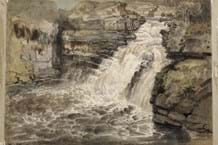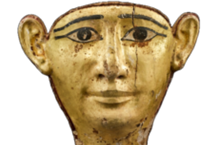FUELLED by the romantic medievalising enthusiasm of Augustus Pugin, nostalgia for the Catholic Revival and the eccentric collecting habits of squire parsons, the taste for Continental church furniture led to the clandestine importation from France and the Low Countries of a mass of altarpieces, reredos, pulpits, lecterns, screens, misericords and as many candlestands as could be, presumably, stuffed down a trouser leg, all acquired by English dealers, architects and Grand Tourists.
This book is the story of a most peculiar phenomenon which started in the early years of the 19th century and continued through to the 1920s, written by a man who has spent 20 years dedicated to the exploration of English church furniture and woodwork, Charles Tracy.
As was observed in 1838, “when the storm of the French revolution burst over different countries of Europe... scarcely was a country overrun by the French, when Englishmen skilled in the arts were at hand with their guineas”.
After the Revolution, the process of secularisation in France and later in the Belgian provinces, offered as prey, to anyone who gave even the slightest sum for them, the furnishings of thousands of churches. After Napoleon’s capture in 1815 and by the time the Grand Tour was resumed, most of the churches in France and Belgium had already been desecrated, with much of the fitted furniture cut up for firewood. Only in Belgium, was there a greater determination to preserve their patrimony with a proportion of wooden furnishings and sculpture afforded limited protection by resourceful clerics and antique dealers.
As regards dealers, one Horatio Rodd, described in a letter to a client, in 1827, how he intended to convert an oak cabinet: “I have bought a very curious Cabinett carved in oak and very clean and perfect. My idea has been to transform it to an Auctioneers Rostrum.”
A regular trade in made-up furniture was consistently promoted by London furniture dealers from the 1830s and there is a marvellously dyspeptic comment on the fashion for these goods as well as their dishonesty of craftsmanship, by H.N. Humphries in 1853: “These wretched patchwork combinations, consisting of every incongruous mixture, stuck together so as to form articles of furniture in common use, have hitherto found ready sale, though without any pervading design, and the detached pieces themselves being generally fragments of the coarsest and most worthless specimens.”
The chapter on the “traffic” from 1789-1860 makes good reading. For instance, until 1950 a set of carved wood panels, probably from the choir stalls of Jumièges Abbey in Normandy were displayed in the entrance hall of Highcliffe Castle, Hampshire, taken by the pillaging amateur architect Lord Stuart de Rothesay, British ambassador to France in the early years of the 19th century, who transported chunks of Jumièges Abbey and a country house in Andelys across the English Channel in specially constructed barges.
The largest section of the book, Part II describes the National Collection, 130-plus pieces of Continental church furniture in wood and, importantly, their provenance, and there is also a county-by-county gazetteer of the main English churches containing fragments of this material. In Part I chapters include two on the birth and demise of nostalgia. There is theft, removal by sale or gift and disposal. Then there is “insensitive decoration... stores of candlestands being recently repainted in the worst possible taste”.
On a final note, and without mentioning any names, the disgraceful sale of fine church artefacts acquired by dealers continues through auction houses on a fairly regular basis. This is a work of research and one for ecclesiologists, furniture historians and furniture dealers, the Friends of Friends of Friendless Churches and one particularly for the library at Hever Castle.
J’accuse over the pews
Continental Church Furniture in England: A Traffic in Piety, by Charles Tracy, published by Antique Collectors’ Club. ISBN 185149376 £50 hb




